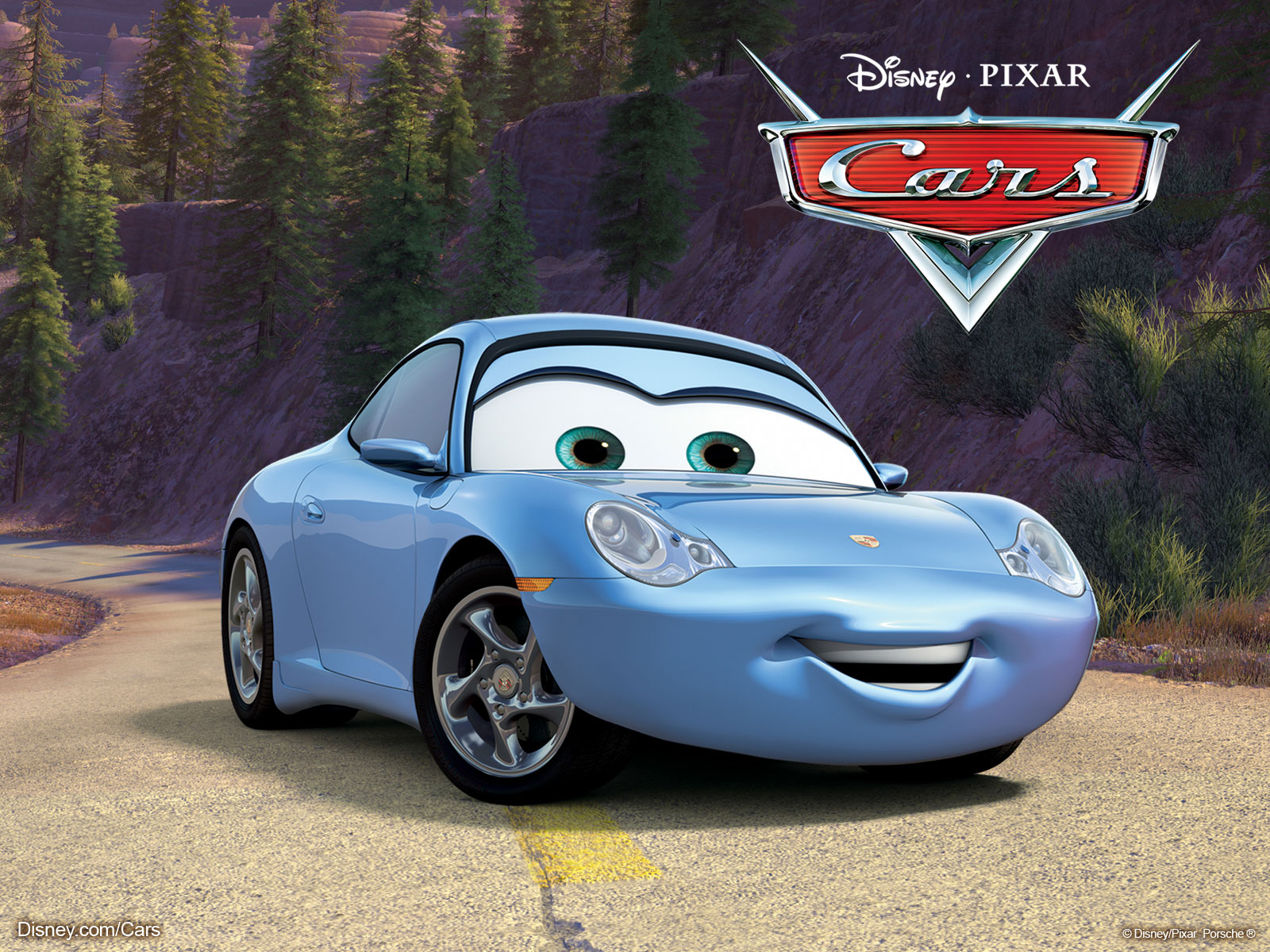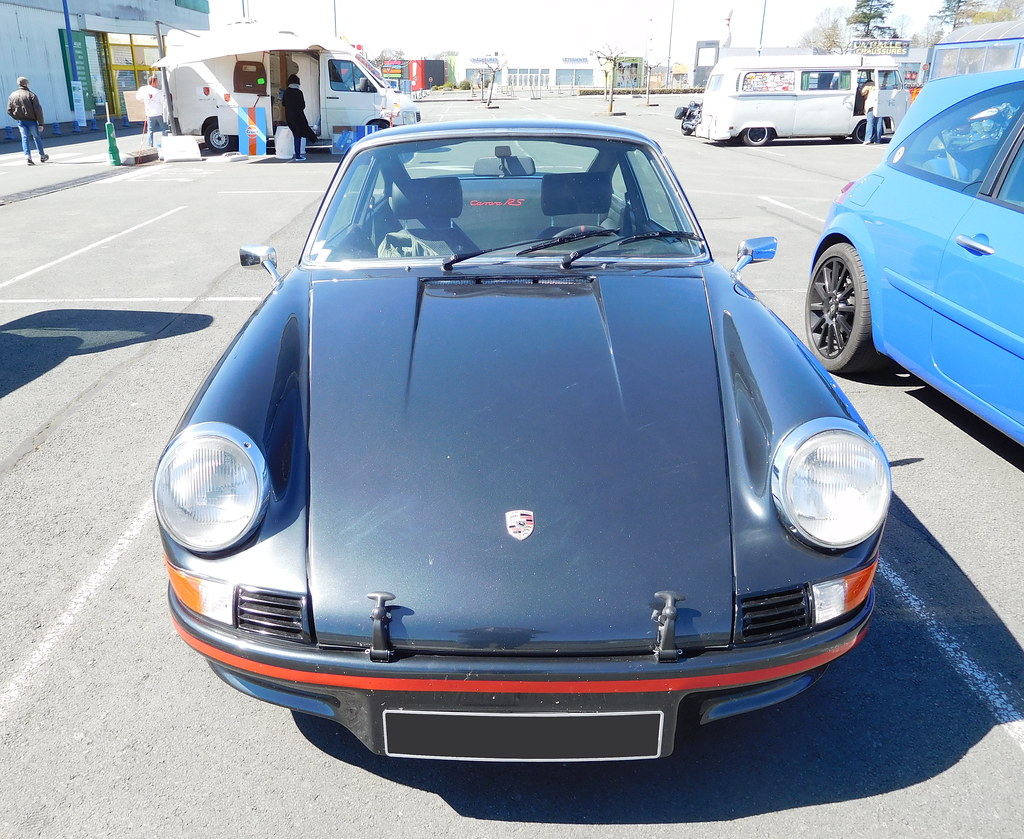
The 1970s! What a decade, right? It was a time of bellbottoms, disco, and some seriously wild fashion choices, but let’s be real, it was also an incredible era for cars. While the gas-guzzling muscle machines of the ’60s were still lingering, the energy crises of the ’70s forced a big shift, turning American buyers towards compact cars. Yet, this didn’t mean vehicles lost their amazing factor; in fact, many models from this time would go on to become true, iconic classics!
But whether they ended up being universally beloved or just plain infamous, these cars are all iconic for one reason or another. They were the cars that filled the streets with deep engine growls, had chrome gleaming like jewelry, and paint in electric colors like Plum Crazy or Sassy Grass. Every trip felt like a movie, with dashboards lighting up like cockpit controls and side mirrors framing perfect sunsets. It was a Golden Age of innovation, setting the stage for the automobile as we know it today, with everything from better engines to groundbreaking mechanical features and bold aesthetics propelling the industry forward.
So, get ready to take a trip down memory lane! We’ve meticulously combed through the automotive archives to bring you 15 of the most memorable and influential cars that truly defined the 1970s. From quirky compacts that stirred up a storm to sleek machines that whispered of race tracks, these vehicles have all acquired praise and earned their unique place in history. Did you have any of these iconic rides parked in your driveway back in the day? Let’s find out!
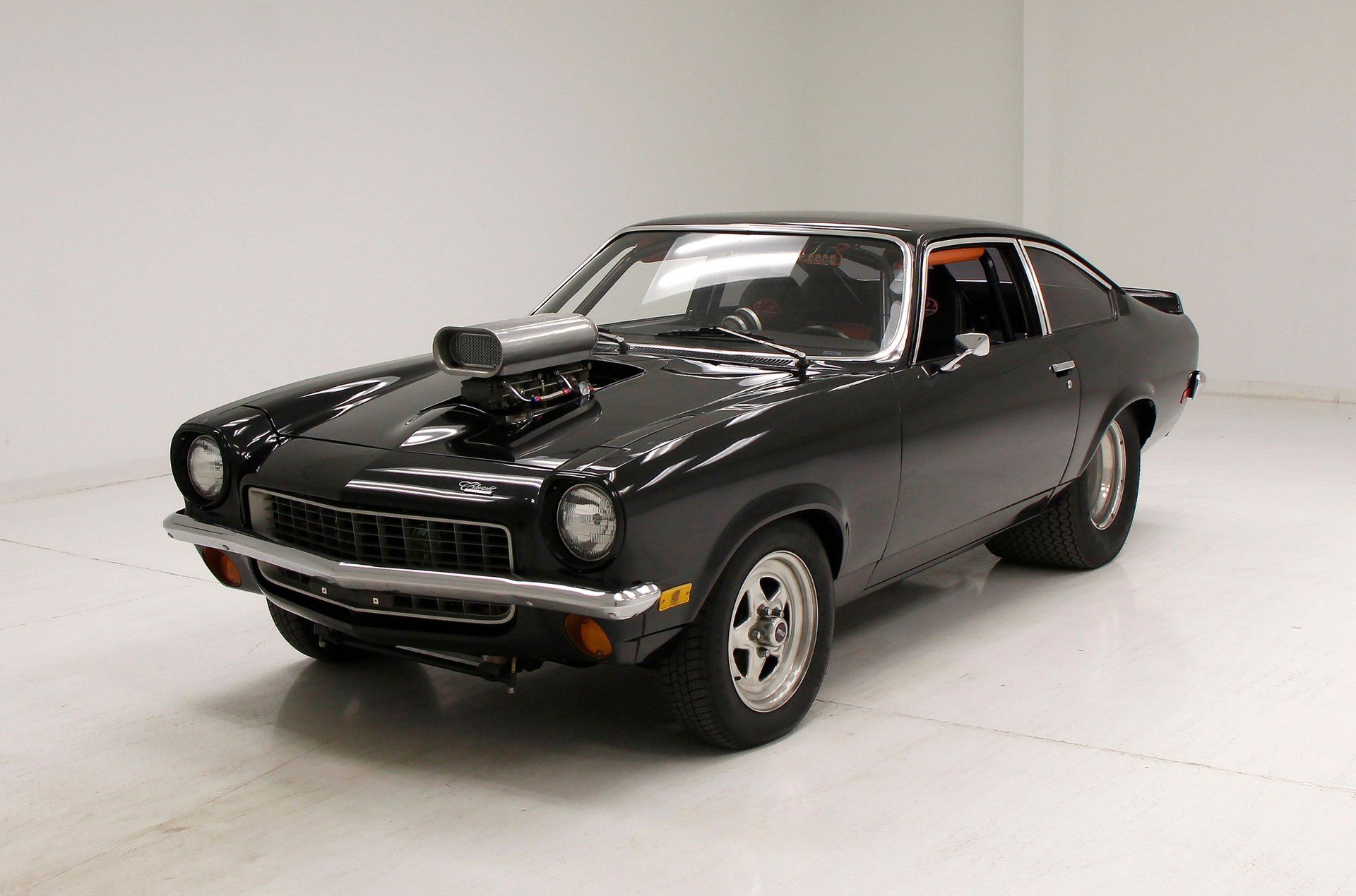
1. **1971 Chevrolet Vega**First up, let’s talk about the 1971 Chevrolet Vega. This car is a real lesson in how a reputation can be built, then, well, kind of crumble. Initially, it burst onto the scene with a bang, even earning the prestigious Motor Trend Car of the Year award! Imagine the excitement, right? Everyone thought it was going to be the next big thing.
But, as the years rolled on, the Vega started running into some serious headwinds. We’re talking about reliability and safety concerns that definitely put a damper on its initial glory. It’s like that one friend who makes a fantastic first impression but then… you know.
And as if those issues weren’t enough, the Vega also had a rather unfortunate tendency to rust. It became one of those cars that people remembered, but maybe not always for the best reasons. Still, for better or worse, it definitely left its mark on the decade’s automotive landscape, showcasing the challenges of compact car production in a rapidly changing market.
It was one of the many models that highlighted the era’s struggles with quality control and meeting new demands while transitioning from the previous decade’s behemoths. Despite its flaws, it’s a car you just can’t forget when you look back at the 70s. It was a bold attempt, even if it eventually became a cautionary tale for car manufacturers.
Car Model Information: 1976 Chevrolet Vega
Name: Chevrolet Vega
Caption: 1971 Chevrolet Vega
Aka: Vega 2300
Manufacturer: Chevrolet
Production: 1970–1977
ModelYears: 1971–1977
Assembly: Lordstown, Ohio
Predecessor: Chevrolet Corvair
Successor: Chevrolet Monza
Class: Subcompact car
BodyStyle: notchback,hatchback,station wagon,Panel van
Layout: FR layout
Platform: GM H platform (RWD)
Engine: {{cvt,2.3,L,cuin,0,Chevrolet 2300 engine
Transmission: manual transmission,4-speed manual,overdrive (mechanics),Torque-Drive 2-speed Powerglide requiring manual shifting,Powerglide,Turbo-Hydramatic
Wheelbase: cvt
Length: cvt
Width: cvt
Height: cvt
Weight: cvt
Related: Pontiac Astre,Chevrolet Monza,Pontiac Sunbird#First generation (1976–1980),Buick Skyhawk#First generation (1975–1980),Oldsmobile Starfire#Second generation (1975–1980)
Designer: Bill Mitchell (designer)
Categories: 1970s cars, All articles needing additional references, All articles with unsourced statements, Articles needing additional references from July 2023, Articles with short description
Summary: The Chevrolet Vega is a subcompact automobile manufactured and marketed by GM’s Chevrolet division from 1970 until 1977. Available in two-door hatchback, notchback, wagon, and sedan delivery body styles, all models were powered by an inline four-cylinder engine designed specifically for the Vega, with a lightweight aluminum alloy cylinder block. The Vega first went on sale in Chevrolet dealerships on September 10, 1970. Variants included the Cosworth Vega, a short-lived limited-production performance version introduced spring 1975.
The Vega received the 1971 Motor Trend Car of the Year. Subsequently, the car became widely known for a range of problems related to its engineering, reliability, safety, propensity to rust, and engine durability. Despite numerous recalls and design upgrades, Vega’s problems tarnished its reputation and that of General Motors. Production ended with the 1977 model year.
The car was named for Vega, the brightest star in the constellation Lyra.
Get more information about: Chevrolet Vega
Buying a high-performing used car >>>
Brand: Chevrolet Model: Vega
Price: $33,000 Mileage: 82,344 mi.
Read more about: Buckle Up! These 15 Car Trends Are Making Everyone Nuts – And Need to Stay in the Past!
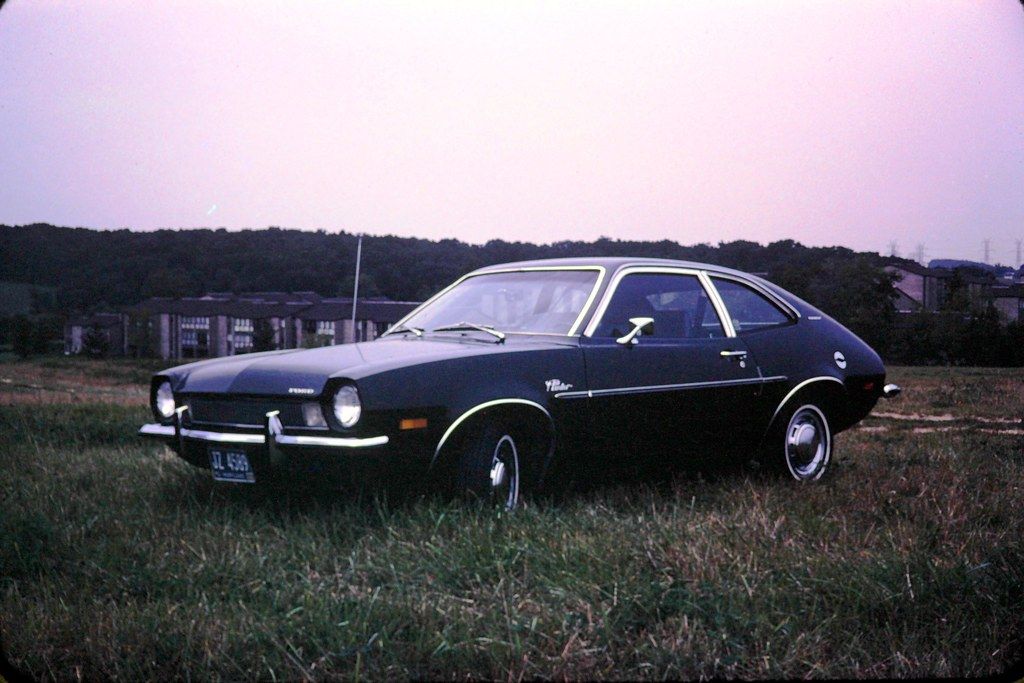
2. **1971 Ford Pinto**Ah, the 1971 Ford Pinto. Quick: what’s the first thing that springs to mind when you hear its name? If you’re like most people, it’s probably something about “explosive” fuel tanks and, well, people dying in fires, right? It’s definitely one of those cars that comes with some serious baggage and has an infamous reputation that overshadows almost everything else.
The simple truth is, statistically speaking, the car had a couple of issues that caused fires, but it wasn’t much worse than other cars of the day in terms of overall safety. However, the real problem — aside from the tragic deaths and injuries, of course — was how Ford handled the whole situation. They went down a path that would become truly notorious.
Rather than simply recalling the cars, Ford famously studied the likely costs of every potential lawsuit. This ethical dilemma became known as the “Pinto Memo” and is even referenced in pop culture, like Edward Norton’s job description in *Fight Club*. It’s a prime example of a brand’s reputation being forever etched by its response to a crisis, for better or worse.
Despite its controversial legacy, this first North American subcompact from Ford actually had a huge commercial presence. In its first 10 years alone, a whopping 3 million models rolled off the production lines. That’s a massive number, cementing its place as a car that, love it or loathe it, absolutely defined a significant part of the 1970s automotive scene.
Car Model Information: 1980 Ford Pinto WAGON
Name: Ford Pinto
Caption: Ford Pinto
Manufacturer: Ford Motor Company
Aka: Mercury Bobcat
Production: September 1970 – July 1980
ModelYears: 1971–1980 (Pinto),1974–1980 (Bobcat)
Assembly: Edison, New Jersey,Milpitas, California
Designer: Robert Eidschun (1968)
Class: Subcompact car
BodyStyle: Sedan (automobile),sedan delivery,station wagon,hatchback
Related: #Mercury Bobcat (1974–1980),Ford Mustang (second generation)
Layout: Front-engine, rear-wheel-drive layout
Chassis: Unibody
Engine: unbulleted list
Abbr: on
Disp: Ford Cologne engine
Transmission: unbulleted list
Wheelbase: 94.0 in
Length: 163 in
Width: 69.4 in
Height: 50 in
Weight: convert
Predecessor: Ford Cortina#Mark II (1966–1970)
Successor: Ford Escort (North America)
Categories: 1980s cars, Articles with short description, Cars discontinued in 1980, Cars introduced in 1970, Commons category link from Wikidata
Summary: The Ford Pinto is a subcompact car that was manufactured and marketed by Ford Motor Company in North America from 1970 until 1980. The Pinto was the first subcompact vehicle produced by Ford in North America.
The Pinto was marketed in three body styles throughout its production: a two-door fastback sedan with a trunk, a three-door hatchback, and a two-door station wagon. Mercury offered rebadged versions of the Pinto as the Mercury Bobcat from 1975 until 1980 (1974–1980 in Canada). Over three million Pintos were produced over its ten-year production run, outproducing the combined totals of its domestic rivals, the Chevrolet Vega and the AMC Gremlin. The Pinto and Mercury Bobcat were produced at Edison Assembly in Edison, New Jersey, St. Thomas Assembly in Southwold, Ontario, and San Jose Assembly in Milpitas, California.
Since the 1970s, the safety reputation of the Pinto has generated controversy. Its fuel-tank design attracted both media and government scrutiny after several deadly fires occurred when the tanks ruptured in rear-end collisions. A subsequent analysis of the overall safety of the Pinto suggested it was comparable to other 1970s subcompact cars. The safety issues surrounding the Pinto and the subsequent response by Ford have been cited widely as business ethics and tort reform case studies.
Get more information about: Ford Pinto
Buying a high-performing used car >>>
Brand: Ford Model: Pinto
Price: $5,951 Mileage: 107,000 mi.
Read more about: Boomers, Get Ready to Rev! These 12 Iconic ’60s Car Models Still Drive Our Dreams
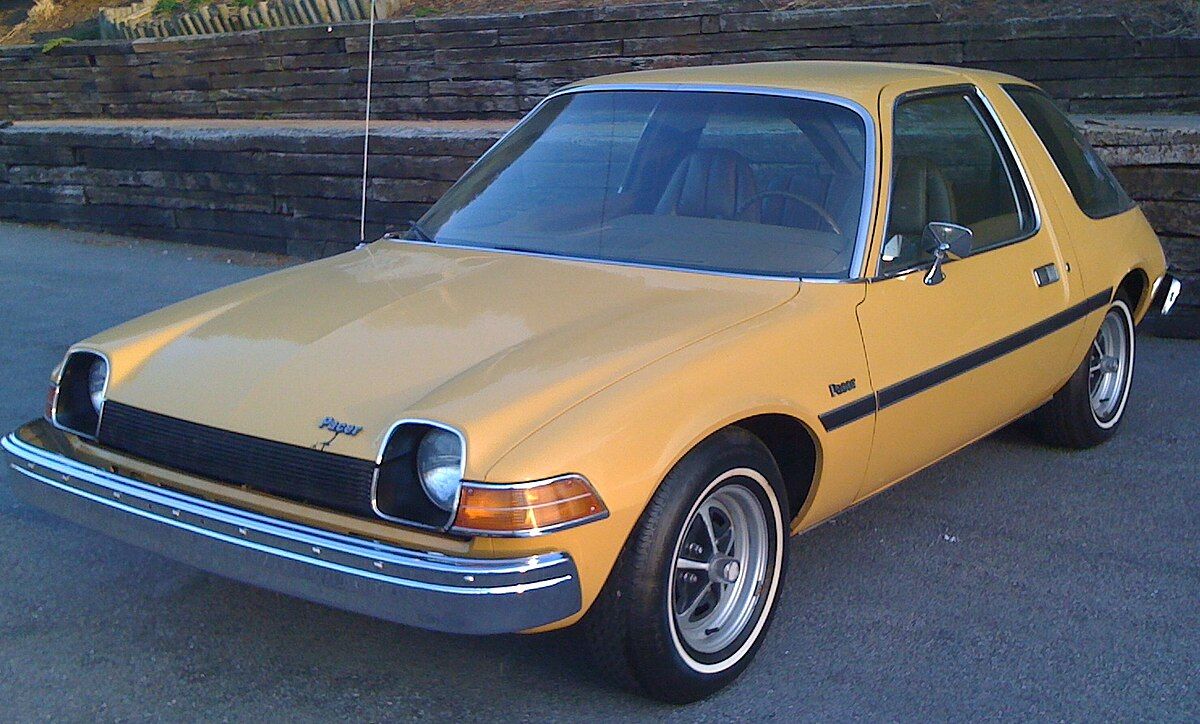
3. **1975 AMC Pacer**Now, if you wanted a car that truly *stood out* in the 1970s, the 1975 AMC Pacer was your go-to. This isn’t just a car; it’s a statement! With its incredibly unique styling and that show-stopping wrap-around rear window, it quickly earned the unforgettable nickname “the flying fishbowl.” Talk about making an entrance!
The two-door compact was definitely in a league of its own. It was designed to stand apart from the lumbering behemoths that were still hogging the roads back then, showcasing a vision for a smaller, more distinctive future. You wouldn’t confuse this car with anything else on the block, and that was totally the point!
The Pacer’s design ethos screamed individuality, and it certainly got people talking. It was a brave departure from conventional automotive aesthetics, reflecting a period when designers weren’t afraid to push boundaries and experiment with bold new shapes. It’s the kind of car that elicits a smile and a nod of appreciation for its sheer audacity, even today.
It perfectly captures the spirit of the ’70s – a little bit quirky, undeniably memorable, and always ready to spark a conversation. While it might not have been everyone’s cup of tea, the Pacer undeniably carved out its own niche and remains an iconic symbol of the decade’s design experimentation. It’s truly a car that had its own unique personality, unlike any other.
Read more about: Beyond the Mainstream: 14 Unforgettable ’70s Classic Cars That Shaped Automotive History for Enthusiasts

4. **1972 Honda Civic**Let’s journey to Japan for a moment and chat about the 1972 Honda Civic. You know the Honda Civic of today, right? It’s a total segment leader in the compact car arena, a household name. Well, this little 1972 model was where it all began, humbly foreshadowing the great things that were to come for Honda.
Back in ’72, it was a subcompact, only available with two doors, but it was already laying the groundwork for its future dominance. It might have seemed small and unassuming, but it had a quiet confidence about it, a hint of the reliability and practicality that would become its hallmark. It was economical, efficient, and surprisingly sprightly for its size.
This early Civic represented a growing shift in the automotive world, moving towards more fuel-efficient and practical vehicles, a trend that would only accelerate with the energy crises of the decade. It wasn’t about flashy muscle; it was about smart design and everyday usability, concepts that were gaining serious traction.
It quietly entered the market, but its impact would resonate for decades, setting a new standard for compact cars globally. The 1972 Honda Civic proved that good things truly do come in small packages, and it paved the way for a whole new generation of accessible, dependable transportation that would eventually challenge established players. It was a true automotive underdog story in the making!
Car Model Information: 2023 Honda Civic Sport
Caption: 2024 Honda Civic liftback
Manufacturer: Honda
Aka: ubl
Production: 1972–present
Class: Subcompact car
BodyStyle: fastback,Sedan (automobile)
Layout: Front-engine, front-wheel-drive layout,Front-engine, four-wheel-drive layout
Predecessor: Honda N600,Honda Z600
Categories: 1980s cars, 1990s cars, 2000s cars, 2010s cars, 2020s cars
Summary: The Honda Civic (Japanese: ホンダ・シビック, Hepburn: Honda Shibikku) is a series of automobiles manufactured by Honda since 1972. As of 2023, the Civic is positioned between the Honda Fit/City and Honda Accord in Honda’s global passenger car line-up. It is one of the best-selling automobiles in history, with over 27 million units sold through 2021.
The first-generation Civic was introduced in July 1972 as a two-door fastback sedan, followed by a three-door hatchback that September. With a 1,169 cc transverse engine and front-wheel drive, the car provided good interior space despite its small overall dimensions. Initially gaining a reputation for being fuel-efficient, reliable and environmentally friendly, later iterations have become known for performance and sportiness, especially the Civic Si, SiR, and Type R versions. It is currently in its eleventh generation, which has been produced since 2021.
The Civic has often been rebadged for international markets, and it served as the basis for the Honda CR-X, the Honda CR-X del Sol, the Concerto, the first generation Prelude, the Civic Shuttle (which later became the Orthia) and the CR-V (which in turn was used as the basis for the Honda FR-V).
Get more information about: Honda Civic
Buying a high-performing used car >>>
Brand: Honda Model: Civic
Price: $23,599 Mileage: 24,225 mi.
Read more about: Boomers, Get Ready to Rev! These 12 Iconic ’60s Car Models Still Drive Our Dreams

5. **1977 Honda Accord**Following hot on the heels of the Civic, another Honda legend emerged: the 1977 Honda Accord. This small, unassuming 3-door hatchback might not have impressed much with its looks initially, but boy, did it surprise everyone with its sportiness! It was fast enough and agile for such a compact car, offering a driving experience that defied its modest exterior.
But beyond its surprising zip, the Accord really hit its stride by proving itself to be an incredibly reliable and practical car. This was a super important factor, especially for the masses who were looking for dependable transportation that wouldn’t break the bank or constantly need repairs. It just worked, day in and day out, and people loved that.
When the Accord arrived in America, it sent shockwaves through the automotive world, particularly among the “Detroit Big Three” — Ford, GM, and Chrysler. They suddenly felt threatened by this little sedan from Japan, which powerfully demonstrated that a high-quality, efficient, and affordable car was absolutely possible, and available at a cheap price too! It truly redefined expectations.
This car’s entry came at a perfect time to take full advantage of the looming 1979 energy crisis, as consumers increasingly sought out fuel-efficient and dependable vehicles. The 1977 Honda Accord wasn’t just a car; it was a phenomenon that would eventually come to dominate the American market, becoming one of the most popular cars in the U.S. and a lasting symbol of practical automotive brilliance.
Car Model Information: 2019 Honda Accord Sport
Name: Honda Accord
Caption: 2023 Honda Accord LX (US)
Alt: Front three-quarter view of a front-engined four-door car.
Manufacturer: Honda
Production: 1976–present
Class: Compact car
BodyStyle: hatchback
Layout: Front-engine, front-wheel-drive layout
Predecessor: Honda 1300
Categories: 1980s cars, 1990s cars, 2000s cars, 2010s cars, 2020s cars
Summary: The Honda Accord (Japanese: ホンダ・アコード, Hepburn: Honda Akōdo; ), also known as the Honda Inspire (Japanese: ホンダ・インスパイア, Hepburn: Honda Insupaia) in Japan and China for certain generations, is a series of automobiles manufactured by Honda since 1976, best known for its four-door sedan variant, which has been one of the best-selling cars in the United States since 1989. The Accord nameplate has been applied to a variety of vehicles worldwide, including coupes, station wagons, hatchbacks and a Honda Crosstour crossover.
Get more information about: Honda Accord
Buying a high-performing used car >>>
Brand: Honda Model: Accord
Price: $18,999 Mileage: 99,930 mi.
Read more about: Unlocking Long-Term Value: The Top 10 SUVs That Hold Their Worth After Five Years, According to Expert Analysis

6. **1976 Cadillac Seville**Hold onto your disco balls, because next up is a car that redefined American luxury in the 70s: the 1976 Cadillac Seville. Now, when you think Cadillac, you usually imagine huge, land-yacht-sized vehicles, right? Well, the Seville was a bit of a curveball. Even though it was smaller than other Cadillac models of the era, it often carried the highest starting MSRP. Talk about making a statement with subtlety!
This wasn’t just any Cadillac; it was GM’s direct answer to the surging popularity of European luxury brands like Mercedes-Benz and BMW. The American market was starting to look beyond massive chrome and tailfins, desiring something a bit more refined, compact, and internationally-styled. The Seville stepped up to the plate, aiming to offer that same prestige in a more manageable package.
The Seville’s design aimed for elegance and sophistication, a departure from the more flamboyant styles often associated with American luxury cars. It was a conscious effort to blend traditional Cadillac comfort with a touch of European flair, appealing to a new generation of luxury car buyers who valued understated class alongside opulence.
It was a bold move, and it worked, establishing the Seville as a key player in the luxury segment. It proved that Cadillac could innovate and adapt to changing tastes, without sacrificing the comfort and status that its name represented. The 1976 Cadillac Seville was truly a car that bridged two worlds, encapsulating the evolving definition of luxury in the turbulent 1970s.
Car Model Information: 1985 Cadillac Seville Base
Name: Cadillac Seville
Caption: 1998–2004 Cadillac Seville
Manufacturer: Cadillac
Production: 1975–2003
ModelYears: 1976–2004
Class: luxury car
Layout: FR layout
Predecessor: Cadillac Calais
Successor: Cadillac STS
Categories: 1980s cars, 1990s cars, All articles with unsourced statements, Articles with short description, Articles with unsourced statements from October 2016
Summary: The Cadillac Seville is a mid-size luxury car manufactured by Cadillac from the 1976 to 2004 model years as a smaller-sized, premium model. It was replaced by the STS in 2004 for the 2005 model year.
Get more information about: Cadillac Seville
Buying a high-performing used car >>>
Brand: Cadillac Model: Seville
Price: $25,900 Mileage: 45,064 mi.
Read more about: 12 Classic Boomer Cars Millennials Avoid: The Hidden Factors Behind Younger Generations’ Disinterest
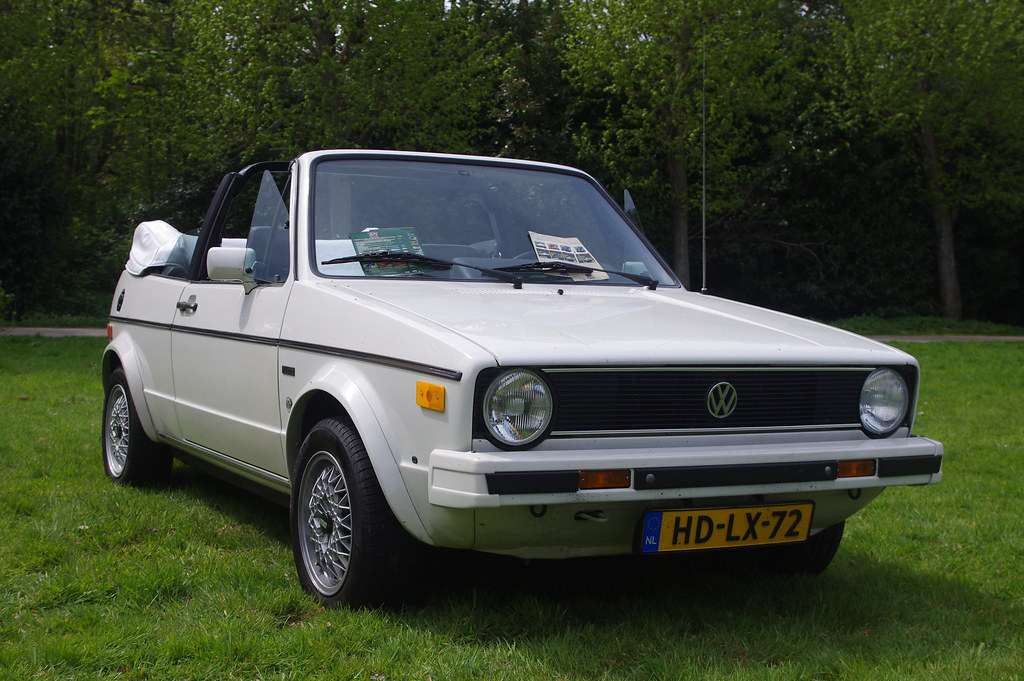
7. **1979 Volkswagen Rabbit**Rounding out our first section, let’s hop into the 1979 Volkswagen Rabbit! Over in North America, what the rest of the world knew as the VW Gold was cleverly marketed under this adorable name, and it quickly burrowed its way into the hearts of drivers. This compact car brought a fresh, distinctly European sensibility to American roads.
The Rabbit featured some seriously distinctive squared-off styling, particularly prominent in the front. It was a sharp contrast to the flowing lines or the “coke-bottle” shapes that had been popular previously, ushering in a more angular, modern aesthetic. And can we talk about those “snowflake” wheels? They were an iconic detail that just screamed “cool.”
This car wasn’t just about looks, though. It was practical, efficient, and fun to drive – embodying Volkswagen’s reputation for smart engineering and accessible vehicles. It showed that a car could be compact and sensible without being boring, perfectly aligning with the shifting priorities of drivers in the late 70s.
The 1979 Volkswagen Rabbit became a beloved staple, representing a new wave of efficient and stylish imports that were gaining immense popularity. It was a car that confidently hopped into the market and showed everyone how to blend form and function with a uniquely European charm, solidifying its place as a truly defining vehicle of the decade.
Alright, so we’ve zipped through the compact trailblazers and the cars that navigated the decade’s wild twists. But hold onto your bellbottoms, because the 1970s weren’t just about efficiency and controversy; they were also a roaring symphony of horsepower, audacious design, and pure, unadulterated swagger! This next leg of our journey takes us straight into the heart of muscle car mayhem and the dawn of exotic supercars that were so futuristic, they still drop jaws today.
Get ready to feel the rumble, hear the exhaust notes, and dive into the machines that turned every street into a runway. These are the cars that solidified the ’70s as a Golden Age of automotive design and power, proving that even amidst change, the desire for speed and style burned brighter than ever. From iconic American legends to European marvels, these vehicles didn’t just define the decade, they carved their names into automotive history with a fiery passion.
Car Model Information: 2009 Volkswagen Rabbit Base
Name: Volkswagen Golf
Caption: Volkswagen Golf Mk8
Manufacturer: Volkswagen
Production: 1974–present
Class: Compact car
Predecessor: Volkswagen Beetle
Successor: Volkswagen ID.3
Alt: grey car (hatchback)
Categories: 1980s cars, 1990s cars, 2000s cars, 2010s cars, 2020s cars
Summary: The Volkswagen Golf () is a compact car/small family car (C-segment) produced by the German automotive manufacturer Volkswagen since 1974, marketed worldwide across eight generations, in various body configurations and under various nameplates – including as the Volkswagen Rabbit in the United States and Canada (Mk1 and Mk5), and as the Volkswagen Caribe in Mexico (Mk1).
The original Golf Mk1 was a front-engined, front-wheel drive replacement for the air-cooled, rear-engined, rear-wheel drive Volkswagen Beetle. Historically, the Golf is Volkswagen’s best-selling model and is among the world’s top three best-selling models, with more than 35 million units sold as of 2019.
Initially, most Golfs were hatchbacks, with the three-door version being somewhat more popular than the five-door. Other variants include an estate (Variant, from 1993), convertible (Cabriolet or Cabrio, from 1979), and a Golf-based saloon called the Jetta, Vento (from 1992), or Bora (from 1999). The Golf covers economy to high-performance market segments.
The Golf has won awards, including the World Car of the Year in 2009, with the Mk6 and in 2013 with the Mk7. Along with the Renault Clio and the Vauxhall Astra, the Golf is one of only three cars to have won European Car of the Year twice, in 1992 and 2013. The Golf has made the annual Car and Driver 10Best list multiple times. The Mk7 won the Motor Trend Car of the Year award in 2015, and the Mk1 GTI also won the award in 1985. The Mk4 won for the best-selling car in Europe in 2001.
Get more information about: Volkswagen Golf
Buying a high-performing used car >>>
Brand: Volkswagen Model: Rabbit
Price: $6,490 Mileage: 85,158 mi.
Read more about: Unleashing the Beasts: A Deep Dive into the 7 Greatest Euro Hot Hatches of the 2000s that Still Thrill Enthusiasts
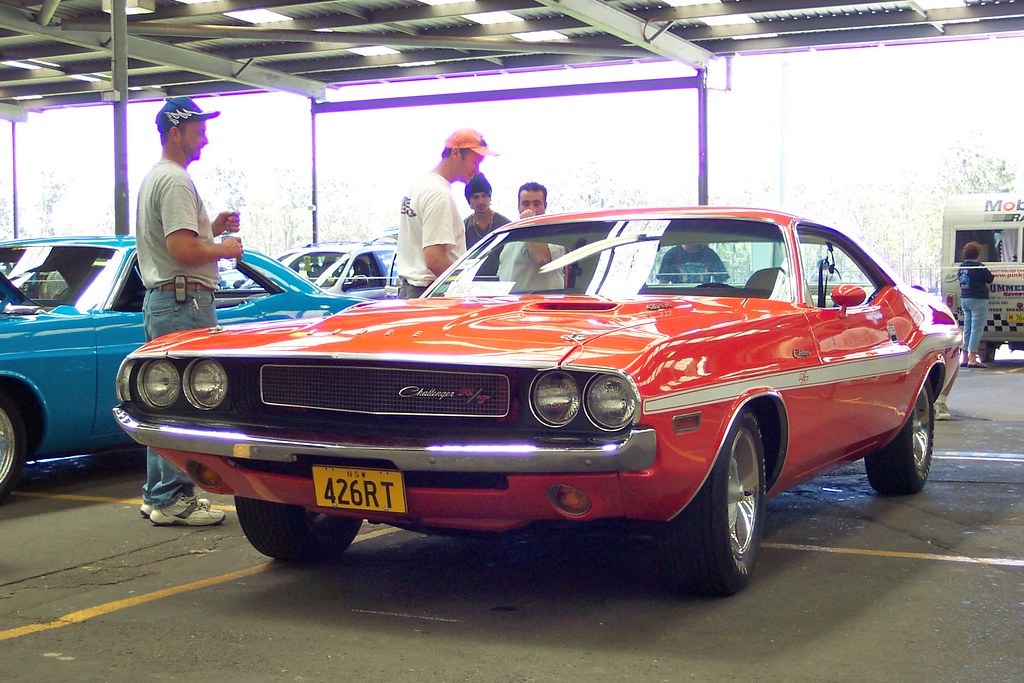
8. **Dodge Challenger R/T**You know that feeling when a car pulls into the parking lot, and you just *know* it means business? That’s the 1970s Dodge Challenger R/T for you. This wasn’t just a car; it was a statement on wheels, announcing its presence with a rumble that told everyone who owned the best mixed tapes. It rolled into view like it owned the block, embodying an unmistakable swagger and powerful attitude.
Its wide stance and that gloriously long hood gave it a silhouette that was absolutely unmistakable. Those dual headlights didn’t just illuminate the road; they beamed with the pure spirit of performance, daring you to take on the open highway. The grille stretched across the front like a bold signature, a menacing grin ready for action.
Step inside, and you found muscle-car comfort with a healthy dose of attitude. High-back bucket seats were designed to hug you with serious intent, keeping you firmly planted when you put your foot down. And that pistol-grip shifter? Oh, it added a tactile excitement to every single gear change, making you feel like a true master of the road.
Imagine it painted in Plum Crazy Purple, glowing with a charisma that just sparked smiles wherever it went. The R/T badging wasn’t just a label; it delivered an aura of raw power and undeniable confidence. Its exhaust note growled with unfiltered authority, a symphony for speed demons. Every line and panel of this machine radiated pure road presence.
The rear panel flowed with a symmetry and strength that was both beautiful and brutal. Drivers didn’t just grip the wheel; they gripped it with purpose and pride, knowing they commanded a true legend. The Challenger R/T truly left an indelible mark, proving that the muscle car era wasn’t over, it was just evolving with a roar.
Car Model Information: 2020 Honda Civic EX-L
Name: Dodge Challenger (2008)
Production: 2008–2023
ModelYears: 2008–2023
Assembly: Brampton, Ontario
Designer: Brian Nielander,
Predecessor: ubl
Successor: Dodge Charger (2024)
Caption: 2017 Dodge Challenger R/T Scat Pack
Manufacturer: Dodge
Class: Muscle car
BodyStyle: notchback,coupe
Engine: unbulleted list
Abbr: on
Order: Chrysler Hemi engine#6.4 Apache / 392 Apache,V8 engine
Layout: Front-engine, rear-wheel-drive layout,Front-engine, all-wheel-drive layout
Transmission: Ultradrive#42RLE,5G-Tronic,Tremec TR-6060 transmission,ZF 8HP transmission
Wheelbase: cvt
Length: cvt
Width: cvt
Height: cvt
Categories: 2000s cars, 2010s cars, 2020s cars, All articles that are excessively detailed, All articles with style issues
Summary: The Dodge Challenger is a full-size muscle car that was introduced in early 2008 originally as a rival to the evolved fifth-generation Ford Mustang and the fifth-generation Chevrolet Camaro.
In November 2021, Stellantis announced that 2023 model year would be the final model year for both the LD Dodge Charger and LA Dodge Challenger, as the company will focus its future plans on electric vehicles rather than fossil fuel powered vehicles, due to tougher emissions standards required by the Environmental Protection Agency for the 2023 model year. Challenger production ended on December 22, 2023, and the Brampton, Ontario assembly plant will be re-tooled to assemble an electrified successor.
Get more information about: Dodge Challenger (2008)
Buying a high-performing used car >>>
Brand: Dodge Model: Challenger R/T
Price: $20,309 Mileage: 74,965 mi.
Read more about: Boomers, Get Ready to Rev! These 12 Iconic ’60s Car Models Still Drive Our Dreams

9. **Plymouth ‘Cuda**If the Challenger was a statement, the Plymouth ‘Cuda was a full-on declaration of war on the asphalt. This beast arrived with the ultimate muscle-era swagger, a car that looked like it was carved from the pavement itself, ready to pounce. Everything about it screamed intensity and power, from its menacing grille to its aggressive profile.
Those shaker hoods? They didn’t just sit there; they rose and pulsed like mechanical heartbeats, signaling the raw power churning underneath. Fender gills offered visual bite and attitude, while wide tires ensured it stayed planted no matter how hard you pushed it. And when it was bathed in a vibrant, Sassy Grass green, it lit up every street corner, demanding attention.
Under that formidable hood lurked legendary HEMI power, hiding like a coiled animal ready to unleash fury. The ducktail spoiler completed its aggressive profile, not just for looks but hinting at its high-speed capabilities. This was MOPAR muscle at its most menacing, the kind of car that felt like a bar-fight in metal form, but with a HEMI.
The cabin wasn’t about frills; it felt focused and utterly ready for speed. Rallye gauges glowed with vintage charm, providing all the crucial information a driver needed in a clear, no-nonsense way. Magnum 500 wheels added that classic American bravado, making the entire stance seem ready to launch forward at any given moment. The badge itself felt like a handshake from Detroit steel, a promise of uncompromising performance.
Car Model Information: 1971 Plymouth Cuda
Caption: 1970 Hardtop Coupe
Name: Plymouth Barracuda
Manufacturer: Plymouth (automobile)
Production: 1964–1974
Assembly: Fenton, Missouri,Hamtramck, Michigan,Maywood, California,Windsor, Ontario
Layout: Front-engine, rear-wheel drive layout
Class: Pony car
Categories: 1970s cars, All articles with dead external links, All articles with unsourced statements, Articles with dead external links from February 2018, Articles with dead external links from January 2022
Summary: The Plymouth Barracuda is a two-door pony car that was manufactured by Chrysler Corporation from 1964 through 1974 model years.
The first-generation Barracuda was based on the Chrysler A-body and was offered from 1964 until 1966. A two-door hardtop (no B-pillar) fastback design, it shared a great majority of parts and bodywork with the Plymouth Valiant, except for the distinctive wraparound rear glass.
The second-generation Barracuda, though still Valiant-based, was heavily redesigned. Built from 1967 through 1969, it was available as a two-door in fastback, notchback, and convertible versions.
The third generation, offered from 1970 until 1974, was based on the Chrysler E-body, exclusive to it, and the slightly larger Dodge Challenger. A completely new design, the two-door Barracuda was available in hardtop and convertible body styles.
Get more information about: Plymouth Barracuda
Buying a high-performing used car >>>
Brand: Plymouth Model: ‘Cuda
Price: $121,000 Mileage: 64,706 mi.
Read more about: Unleashing the Roar: 14 Iconic Muscle Cars from the 1970s That Defined an Era of Power and Style for Enthusiasts
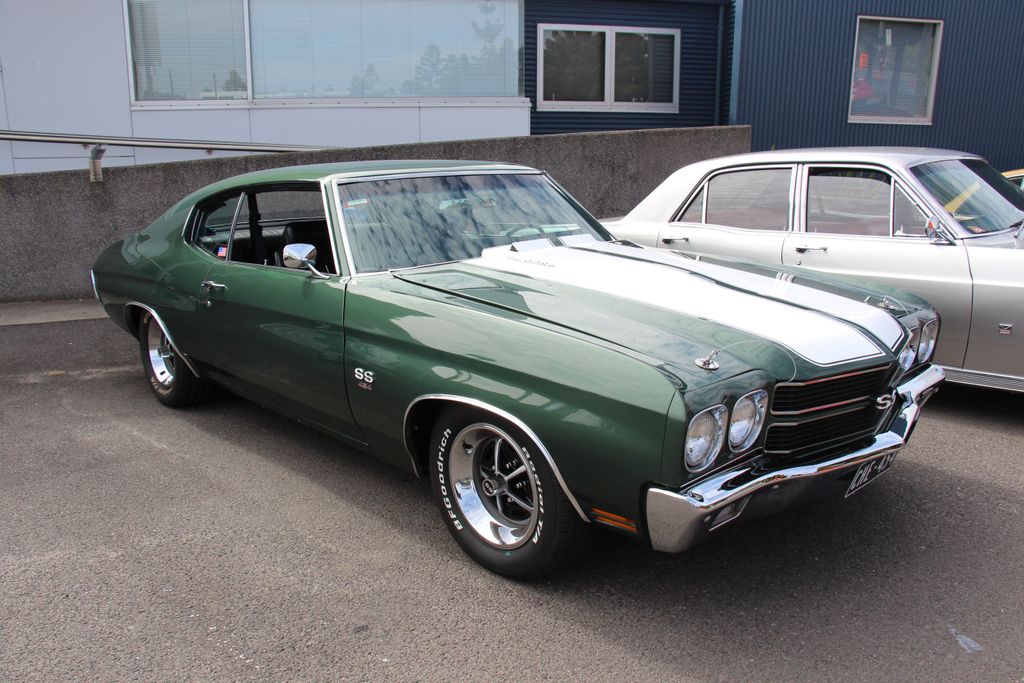
10. **Chevrolet Chevelle SS 454**The Chevrolet Chevelle SS 454 wasn’t just a car; it was a legend that wore its stripes like medals earned on the asphalt. This was the kind of car that made your dad grin from ear to ear and probably caused your neighbors to file a few noise complaints – in the best way possible, of course! It was the epitome of raw power and asphalt presence.
Its bulging cowl-induction hood wasn’t just for show; it signaled high-octane intent, feeding the beast beneath with hungry gulps of air. Twin headlights led the way with squared-off resolve, giving the Chevelle an imposing and unforgettable face. Chrome trim shimmered across its body like opulent jewelry for the street, reflecting its inherent swagger.
Under that formidable hood resided the LS6 engine, bringing raw power in truly massive doses. Its exhaust didn’t just make noise; it filled the air with a deep, rhythmic rumble, a soundtrack to every high-speed adventure. The SS badge rested proudly on a grille that spoke with unwavering certainty, leaving no doubt about its performance credentials.
The cabin welcomed drivers with what we like to call “muscle-car luxury and space.” It stretched out long and strong, clearly built for conquering big roads and creating big moments. Bucket seats cradled the driver like a favorite leather chair, providing comfort even during spirited driving. The wheel responded with enthusiasm and strength, making every turn a thrill.
Tire smoke became a signature left behind at every stoplight, a testament to its formidable power. Sunday drives transformed into cherished weekend rituals behind the wheel of this asphalt warrior. The Chevelle SS 454 wasn’t just a car; it was an experience, a roaring symbol of American might.
Car Model Information: 2022 Honda Civic Sport
Name: Chevrolet Chevelle
Caption: 1970 Chevrolet Chevelle SS 396 Sport Coupe
Manufacturer: Chevrolet
Production: 1963–1977
ModelYears: 1964–1977
Class: Mid-size
Platform: GM A platform (RWD)
Layout: FR layout
Successor: Chevrolet Malibu
Categories: 1970s cars, All articles needing additional references, All articles that may contain original research, All articles with specifically marked weasel-worded phrases, All articles with unsourced statements
Summary: The Chevrolet Chevelle is a mid-sized automobile that was produced by the Chevrolet division of General Motors (GM) in three generations for the 1964 to 1977 model years. Part of the GM A-body platform, the Chevelle was one of Chevrolet’s most successful nameplates. Body styles included coupes, sedans, convertibles, and station wagons. The “Super Sport” versions were produced through the 1973 model year and Lagunas from 1973 through to 1976.
After a four-year absence, the El Camino was reintroduced as part of the new Chevelle lineup in 1964.
From 1964 to 1969, GM of Canada sold a modified version of the Chevelle that included a Pontiac-style grille, and a LeMans instrument panel, marketed as the Beaumont.
The Malibu was the top-of-the-line model to 1972, and completely replaced the Chevelle nameplate starting with the redesigned, and downsized 1978 model year.
Get more information about: Chevrolet Chevelle
Buying a high-performing used car >>>
Brand: Chevrolet Model: Chevelle SS 454
Price: $25,849 Mileage: 16,061 mi.
Read more about: Unearthing the Best Factory Muscle Trucks: A Deep Dive into Performance Legends and Their Enduring Legacy
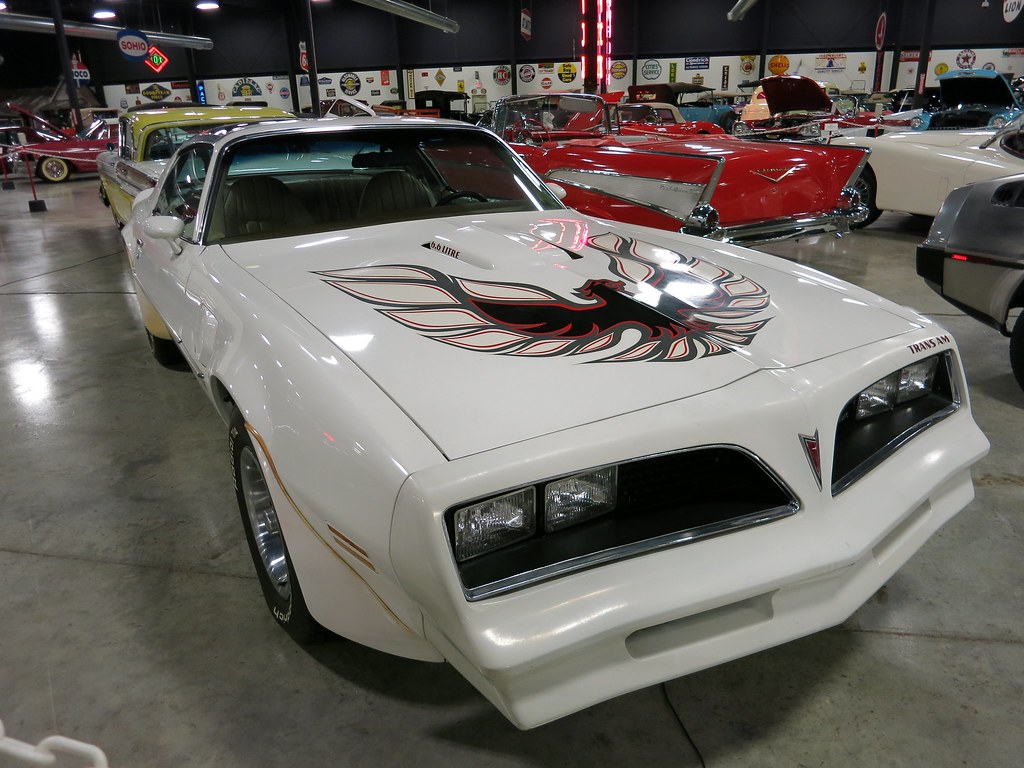
11. **Pontiac Trans Am**Hold on to your cowboy hats, because the Pontiac Trans Am bursts onto the scene with late-decade muscle magic, and sitting behind the wheel made you feel like you were the main character of your very own action flick. Seriously, who didn’t want to be Burt Reynolds tearing down the highway in one of these? The Trans Am epitomized cinematic flair and legendary status.
That iconic black and gold finish gleamed with undeniable cinematic flair, a color scheme that instantly screamed cool. And the Firebird decal? Oh, it dominated the hood like a majestic badge of honor, a symbol of freedom and power. Quad headlights created a gaze that locked in with fierce determination, ready for anything the road threw its way.
But let’s talk about the T-tops. They didn’t just open; they opened the roof to endless skies and clear, starlit nights, transforming every drive into an open-air adventure. The shaker hood pulsed with every rev of the engine, a visible testament to the power brewing underneath. No wonder Burt Reynolds made it a legend on the silver screen in *Smokey and the Bandit*!
Wide wheels pushed into the pavement with unwavering confidence, ensuring grip and stability. The exhaust roared with a deep, attention-grabbing voice, a siren song for anyone with a need for speed. Inside, the dash surrounded the driver with sporty cues and gauges, making every journey feel like a mission.
Every turn of the ignition brought a small celebration, a moment of anticipation for the adventure ahead. This second-generation Firebird Trans Am, produced between 1970 and 1981, featured a beastly 7.5-liter V8 as its top spec. It wasn’t just a car; it drove straight into memories with unparalleled power and unforgettable personality.
Car Model Information: 2022 Honda Civic Sport
Name: Pontiac Firebird
Caption: The second, third, and fourth generations of,the Pontiac Firebird Trans Am
Manufacturer: Pontiac (automobile)
Production: February 23, 1967 – August 30, 2002
ModelYears: 1967 – 2002
Class: Pony car,Muscle car
Platform: GM F platform
Related: Chevrolet Camaro
Layout: Front engine, rear-wheel-drive layout
Categories: 1970s cars, 1980s cars, 1990s cars, 2000s cars, All articles with dead external links
Summary: The Pontiac Firebird is an American automobile built and produced by Pontiac from the 1967 to 2002 model years. Designed as a pony car to compete with the Ford Mustang, it was introduced on February 23, 1967, five months after GM’s Chevrolet division’s platform-sharing Camaro. This also coincided with the release of the 1967 Mercury Cougar, Ford’s upscale, platform-sharing version of the Mustang.
The name “Firebird” was also previously used by GM for the General Motors Firebird series of concept cars in the 1950s.
Get more information about: Pontiac Firebird
Buying a high-performing used car >>>
Brand: Pontiac Model: Trans Am
Price: $25,849 Mileage: 16,061 mi.
Read more about: Boomers, Get Ready to Rev! These 12 Iconic ’60s Car Models Still Drive Our Dreams
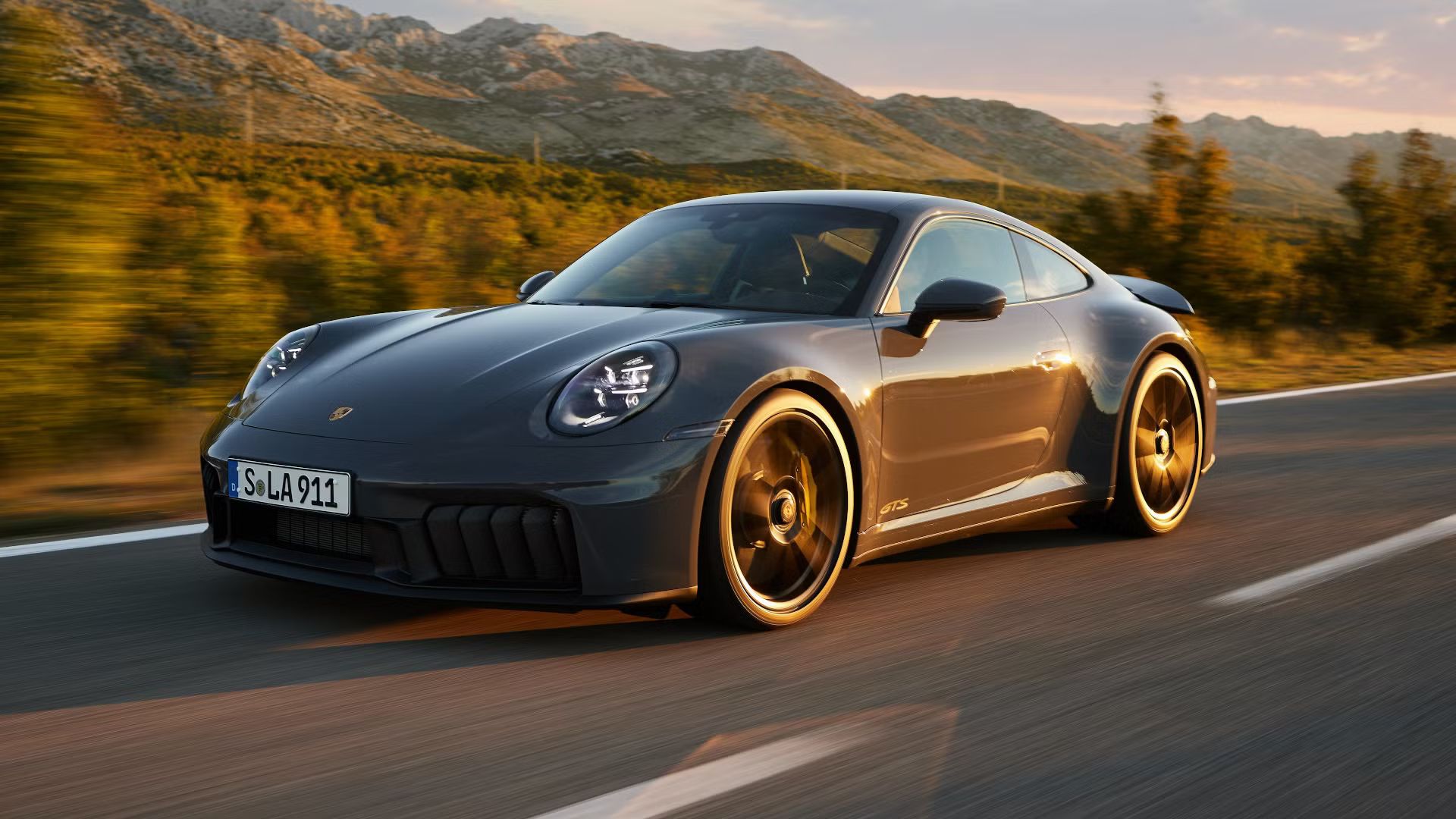
12. **Porsche 911 Carrera RS**Shifting gears to something with a bit more European finesse, the Porsche 911 Carrera RS arrived on the scene carrying grace and athleticism in equal measure. This wasn’t just a sports car; it was a precision instrument, designed for drivers who truly appreciated the art of performance. Its iconic form hinted at serious track capability with an understated elegance.
That distinctive ducktail spoiler wasn’t just a stylistic flourish; it served as both a signature and a crucial functional element, improving aerodynamics at speed. The car’s shape flowed like a single, masterful stroke from a designer’s hand, embodying fluid motion even when stationary. Fenders flared gently, giving perfect balance to its poised stance.
The rear-engine setup, a Porsche hallmark, brought a unique kind of thrilling driving experience that set it apart. Lightweight construction was key, giving every drive a sense of lift and agility that was truly exhilarating. Inside, the gauges in the cockpit weren’t just dials; they sat like precision tools, each one meticulously placed for optimal driver focus.
The flat-six engine beneath that elegant rear purred at low revs, a contented beast, but it truly sang at high speeds, unleashing a mechanical symphony. The wheels tucked perfectly under the bodywork with exquisite finesse, completing a vision of balanced power. Its profile whispered stories of legendary race tracks and winding coastal highways.
The Porsche badge glowed with decades of motorsport glory, a testament to its champion lineage. Paint choices felt refined and purposeful, reflecting a dedication to classic design. This machine didn’t just drive; it glided through corners with the poise of a figure skater, embracing the road with an eager enthusiasm that was contagious.
Car Model Information: 2022 Honda Civic Sport
Name: Porsche 911
Caption: The 1 millionth 911 produced on display at Volkswagen Group Forum, Berlin
Designer: Ferdinand Alexander Porsche
Manufacturer: Porsche
Production: September 1964 – present
Assembly: Stuttgart,Baden-Württemberg
Class: Sports car
BodyStyle: unbulleted list
Related: unbulleted list
Layout: Rear-engine design,rear-wheel drive
Predecessor: Porsche 356
Categories: 1970s cars, 1980s cars, 1990s cars, 2+2 coupés, 2000s cars
Summary: The Porsche 911 model series (pronounced Nine Eleven or in German: Neunelf) is a family of German two-door, high performance rear-engine sports cars, introduced in September 1964 by Porsche AG of Stuttgart, Germany. Now in its eighth generation, all 911s have a rear-mounted flat-six engine, and usually 2+2 seating, except for special 2-seater variants. Originally, 911s had air-cooled engines, and torsion bar suspension, but the 911 has been continuously enhanced, and evolved across generations. Though the 911 core concept has remained largely unchanged, water-cooled engines were introduced with the 996 series in 1998, and front and rear suspension have been replaced by Porsche-specific MacPherson suspension up front, and independent multi-link rear suspension.
The 911 has been raced extensively by private and factory teams, in a variety of classes. It is among the most successful competition cars. In the mid-1970s, the naturally aspirated 911 Carrera RSR won world championship races including Targa Florio and the 24 Hours of Daytona. The 911-derived 935 turbo also won the 24 Hours of Le Mans in 1979. Porsche won the World Championship for Makes in 1976, 1977, 1978, and 1979 with 911-derived models.
In a 1999 poll to determine the Car of the Century, the 911 ranked fifth — one of two in the top five that had remained continuously in production (the original Beetle remained in production until 2003). The one millionth example was manufactured in May 2017 and is in the company’s permanent collection.
Get more information about: Porsche 911
Buying a high-performing used car >>>
Brand: Porsche Model: 911 Carrera RS
Price: $25,849 Mileage: 16,061 mi.
Read more about: The Ultimate Nineties Rewind: 15 Coolest Cars of the Decade That Still Fuel Our Automotive Dreams
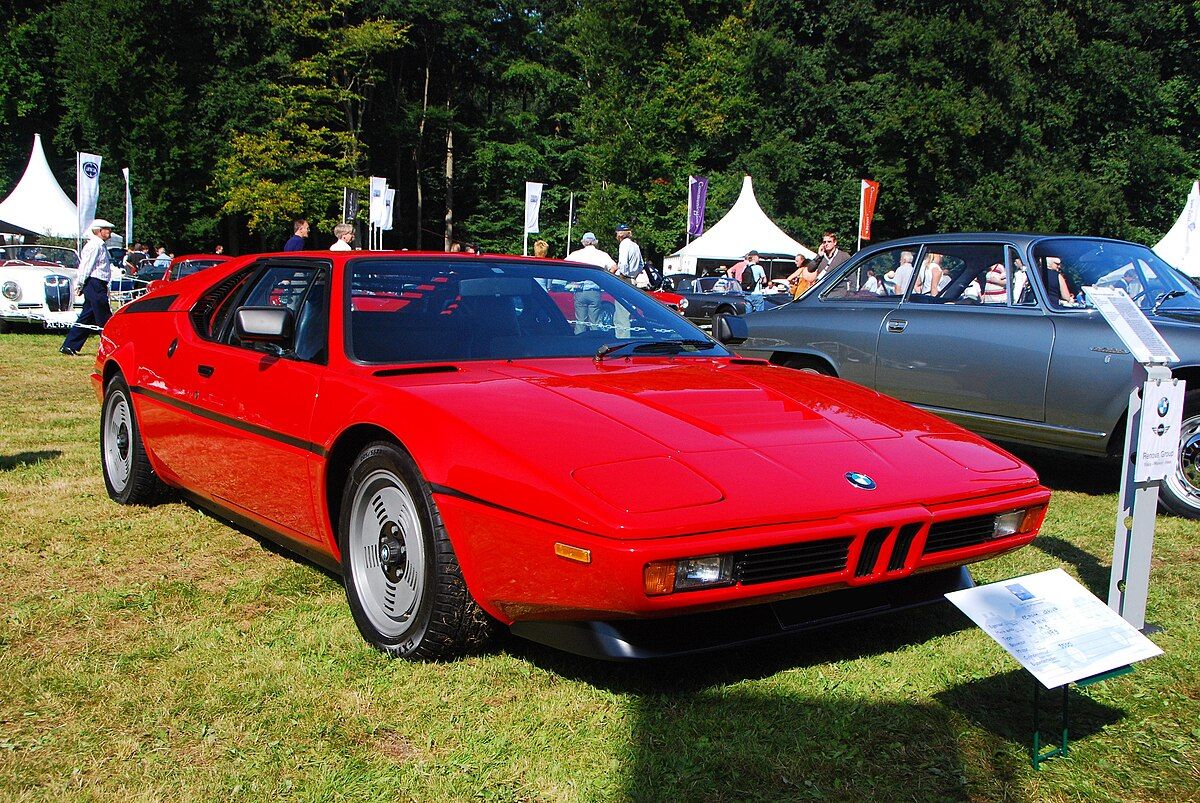
13. **BMW M1**Now, for something truly groundbreaking: the BMW M1. This car didn’t just roll into the 1970s; it sliced through them with architectural sharpness, sitting incredibly low and announcing the arrival of a new breed of supercar. It was among the first supercars ever built by the Bavarian carmaker, a true vision of what was possible when German precision met Italian flair.
Its distinctive wedge profile didn’t just look fast; it literally sliced through the imagination, hinting at the incredible speed and aerodynamic efficiency it possessed. Those pop-up headlights blinked with a subtle theater, adding a touch of futuristic drama to its already striking appearance. This was a car where Italian design wrapped German precision in visual poetry, a collaboration that produced something truly special.
The mid-engine layout wasn’t just a technical detail; it ensured harmony in every curve and corner, providing unparalleled balance and handling. Inside, the dashboard wasn’t merely functional; it cocooned the driver with an intense focus, making it clear this machine was built for serious performance. Inline-six power surged forward with quicksilver energy, promising exhilarating acceleration.
Wide rear fenders flared with planted intent, firmly grounding the M1 and emphasizing its raw power. The taillights glowed with unmistakable 1970s futurism, signaling its advanced design. It didn’t just drive; it rolled like a concept car that had somehow been made real, a testament to its radical vision.
Badging glinted with understated pride, reflecting BMW’s ambitious entry into the supercar arena. Every curve and edge carried intention, meticulously crafted for both aesthetics and performance. Designed and built with racing in mind, it sported a 275hp 3.5-liter straight-six M88 engine, cementing its place at the top. From driveway to racetrack, the BMW M1 moved with a singular, unmistakable identity.
Read more about: Unleashing the Beasts: A Deep Dive into the 7 Greatest Euro Hot Hatches of the 2000s that Still Thrill Enthusiasts
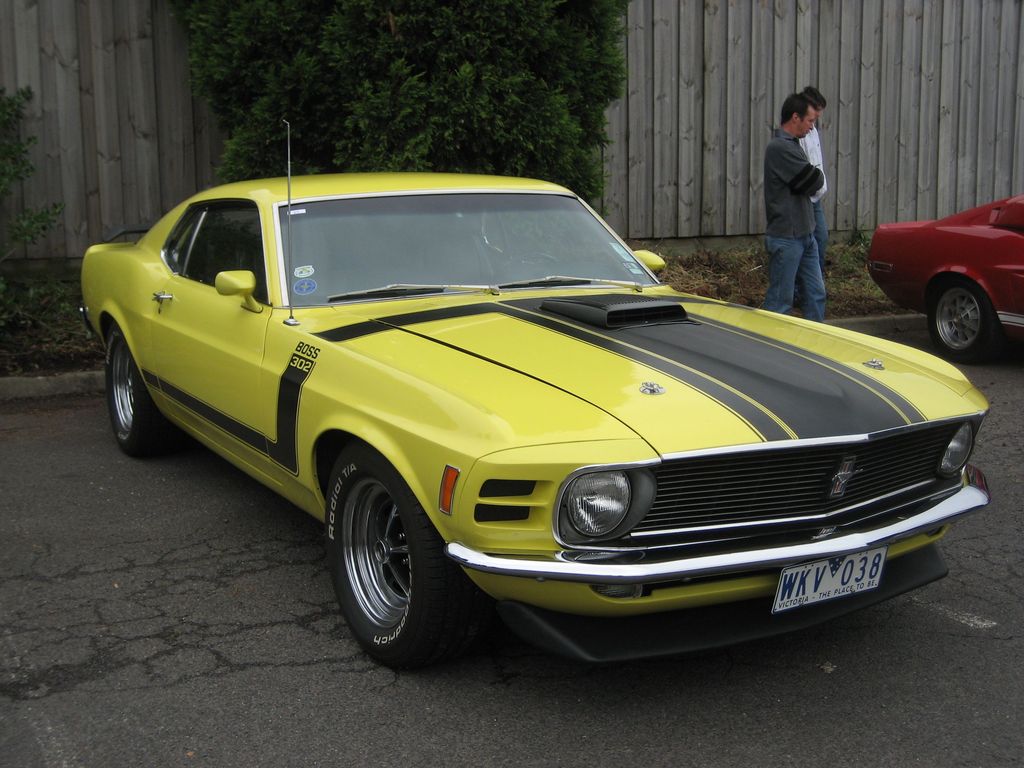
14. **Ford Mustang Boss 302**When the Ford Mustang Boss 302 barks into life, it’s like a champion boxer stepping into the ring, full of fight and undeniable power. Although it was primarily produced between 1969 and 1970, its influence roared well into the early 70s, making it an undeniable icon of the era’s performance scene. This was more than just a Mustang; it was a high-performance variant, a legend among legends.
Its bold C-stripes weren’t just decoration; they outlined a body constantly in motion, a visual representation of its dynamic capabilities. The front spoiler added ground-hugging drama, hinting at its aggressive handling and aerodynamics. Under that purposeful hood, the 302 small-block engine didn’t just run; it breathed like a lion, ready to unleash its power at a moment’s notice.
The interior kept things tight and tidy, everything designed with performance in mind. Rear window louvers weren’t just cool; they delivered race-bred styling, emphasizing its SCCA roots and readiness for weekend battles on the track. The entire stance of the Boss 302 spoke volumes about its competitive spirit, a car built to dominate.
That distinctive shaker scoop wasn’t just a stylistic touch; it added movement to every moment, vibrating with the engine’s power. The Mustang galloped across highways with steady force, a relentless performer. Its presence at car meets made them feel like reunions, drawing admirers with its classic appeal and formidable reputation.
Drivers felt instantly connected behind the wheel, every shift of the gears becoming part of a thrilling rhythm. The 5.0-liter V8 produced 290hp and 290ft-lbs of torque, which was plenty to make everybody want to drive it. The “Boss” name carried legacy and pride, firmly establishing this Mustang as a defining force of the early 1970s.
Car Model Information: 2022 Honda Civic Sport
Layout: FR layout
Manufacturer: Ford Motor Company
Production: 1969–1970 and 2012–2013
Name: Boss 302 Mustang
Assembly: Dearborn, Michigan
Designer: Larry Shinoda
Engine: Ford Boss 302 engine,Overhead valve,V8 engine
Transmission: Manual transmission
Related: Ford Mustang
Class: Muscle car
BodyStyle: Fastback,Coupe
Categories: All articles needing additional references, All articles with unsourced statements, Articles needing additional references from June 2023, Articles with short description, Articles with unsourced statements from March 2024
Summary: The Mustang Boss 302 is a high-performance 302 cu in (4.9 L) H.O. V8-powered variant of the Ford Mustang originally produced by Ford in 1969 and 1970. Developed to meet homologation requirements to compete in Trans Am racing, it was Ford’s response to the success of the Chevrolet Camaro Z/28 in the 5 L (305.1 cu in) and under SCCA series since 1967. While substantial modifications were required to the stock Boss 302 to be competitive on the track, many thousands were sold to the public in a street-legal form that included a refined high-performance motor and upgrades to the suspension and brakes over base Mustangs.
Ford revived the Boss 302 name for another two year production run in 2012 and 2013.
Get more information about: Boss 302 Mustang
Buying a high-performing used car >>>
Brand: Ford Model: Mustang Boss 302
Price: $25,849 Mileage: 16,061 mi.
Read more about: John Wick’s 1969 Mustang: How a Classic Car Became a Cinematic Icon
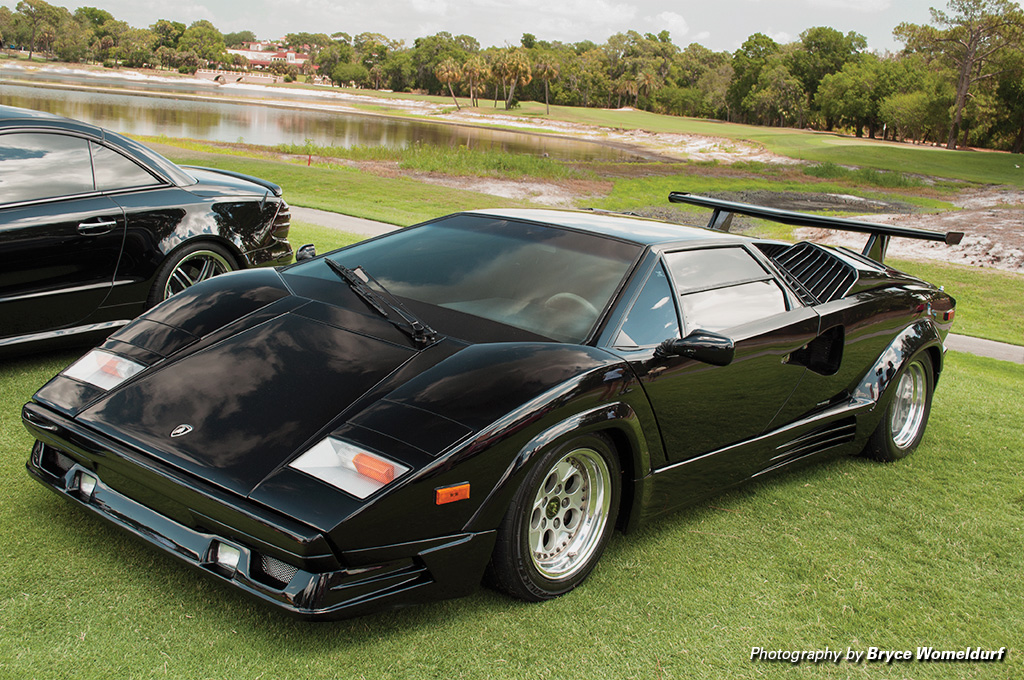
15. **Lamborghini Countach**And finally, prepare yourselves for a grand finale that embodies the very essence of 1970s automotive futurism: the Lamborghini Countach. This isn’t just one of the most iconic Lamborghinis ever; it’s a marvel of 1970s engineering that truly spanned multiple decades, staying in production from 1974 all the way to 1990.
True beauty might be timeless, but most things shockingly futuristic tend to age badly. Not the Countach. It somehow looks just as crazy and jaw-dropping today as it did in 1974, which is exactly why it held the highest level of poster-car status throughout both the ’70s and the 1980s. Its aesthetic was literally never before seen, influencing countless future supercar designs.
The exotic bodywork of the Lamborghini Countach was so incredibly well-thought out that the car looked fast even when it was parked. Designed by the legendary Marcello Gandini, the same visionary behind the De Tomaso Pantera and Lamborghini Miura, it pushed boundaries with its sharp lines and aggressive angles, becoming a benchmark for automotive sculpture.
When it came to performance, the 3.9-liter V12 nestled under the hood of the Countach delivered, and then some. This powerhouse engine propelled the car to a thrilling 196 mph top speed and a blistering 5.4-second sprint from 0 to 60 mph, firmly placing it in rivalry with the most elite Italian supercars of the era.
It’s one of those cars that didn’t just leave an impression; it ripped through the automotive landscape, forever changing perceptions of speed, design, and what a “supercar” could be. The Lamborghini Countach is a testament to audacious vision and remains, without a doubt, a defining symbol of the 1970s and beyond, a pure, unadulterated automotive dream.
Car Model Information: 1989 Lamborghini Countach 25th Anniversary
Name: Lamborghini Countach
Caption: Lamborghini Countach LP5000 QV
Manufacturer: Lamborghini
Production: 1974–1990
Assembly: Sant’Agata Bolognese
Designer: Marcello Gandini
Class: Sports car
BodyStyle: coupe
Layout: Longitudinal engine,mid-engine,rear-wheel-drive
Related: Lamborghini LM002
Engine: Lamborghini V12,V12 engine,LP400, LP400 S: {{cvt,3929,cc,L,1,disp=flip
Transmission: synchromesh,Manual transmission
Wheelbase: 96.46 in
Abbr: on (LP5000QV)
Order: flip
Length: 162.99 in
Width: LP 400: {{cvt,74.28,in,mm,0,abbr=on,order=flip
Height: 42.13 in
Weight: {{convert,1300.5,kg,lb,0,abbr=on
Predecessor: Lamborghini Miura
Successor: Lamborghini Diablo
Doors: Scissor doors
Sp: uk
Categories: 1980s cars, 1990s cars, All articles with unsourced statements, Articles containing Italian-language text, Articles containing Piedmontese-language text
Summary: The Lamborghini Countach ( KOON-tahsh) is a rear mid-engine, rear-wheel-drive sports car produced by the Italian automobile manufacturer Lamborghini from 1974 until 1990. It is one of the many exotic designs developed by Italian design house Bertone, which pioneered and popularized the sharply angled “Italian Wedge” shape.
The wedge style was introduced to the public in 1970 with the Lancia Stratos Zero concept car. The first showing of the Countach prototype was at the 1971 Geneva Motor Show, as the Lamborghini LP500 concept.
The “Countach” nameplate was reused for the Sián-based limited-production hybrid-electric model called the Countach LPI 800-4 in 2021.
Get more information about: Lamborghini Countach
Buying a high-performing used car >>>
Brand: Lamborghini Model: Countach
Price: Not Priced Mileage: 7,493 mi.
Read more about: Unearthing the Best Factory Muscle Trucks: A Deep Dive into Performance Legends and Their Enduring Legacy
Well, wasn’t that a ride? From the quirky compacts that showed resilience in a changing world to the thundering muscle cars and futuristic supercars that proved horsepower would always find a way, the 1970s were a wild, unforgettable decade for automobiles. These cars weren’t just machines; they were characters, each with a story, a roar, or a whisper that still echoes today. They pushed boundaries, sparked conversations, and ultimately, left an incredible legacy that paved the way for the cars we drive now. So, whether you cruised in one or just dreamed about it, these 15 rides truly cemented the ’70s as a vibrant, sometimes chaotic, but always iconic chapter in automotive history. What a time to be alive, right?


